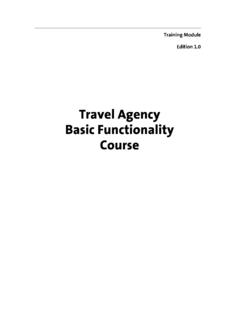Transcription of SAFETY DATA SHEET ---- FOXFIRE P-1007 Concrete Sealer
1 SAFETY DATA SHEET ---- FOXFIRE P-1007 Concrete Sealer Effective Date: 02-01-2015. SECTION 1: IDENTIFICATION. PRODUCT TRADE NAME: FOXFIRE P-1007 Sealer . RECOMMENDED USE: Penetrating Concrete /masonry Sealer , Concrete densifier, sodium chloride purge/reducer SUPPLIER/MANUFACTURER NAME: FOXFIRE Enterprises Inc. 173 Willow Lane West, TX 76691 Phone: (254) 829-1943. EMERGENCY PHONE: CHEMTREC: 800-424-9300 OR FOXFIRE 254-829-1943. SECTION 2. HAZARDS IDENTIFICATION Signal Word: None NFPA 704 CODES: 0=Minimal, 1=Slight, 2=Moderate, 3=Serious; 4=Severe Alkaline.
2 May cause eye, skin and HMIS III Codes: *=Chronic; 0=Minimal; 1=slight; 2=moderate; 3=high; 4=extreme respiratory irritation with HEALTH (BLUE) FLAMMABILITY (RED) REACTIVITY (YELLOW) CLOTHING overexposure. Use with adequate NFPA: 1 NFPA: 0 NFPA: 0 NFPA: ventilation. HMIS: 1 HMIS: 0 HMIS: 0 HMIS: Caution: Spills may be slippery. ACUTE EFFECTS OF OVEREXPOSURE: Large spills on surface dry to form -EYE: Causes irritation. Wear eye and face protection glass film that can cut skin -SKIN: Causes irritation or can cause delayed allergic skin reaction.
3 Wear gloves -INHALATION: Breathing mist may cause mild irritation to upper respiratory tract. Wear mask for prolonged exposure -INGESTION: May cause irritation to mouth, esophagus, and stomach. -CHRONIC HAZARDS: No known chronic hazards. Not listed by NTP, IARC or OSHA as a carcinogen. -PHYSICAL HAZARDS: Spilled material is very slippery. Use caution in walking. Can etch glass. PRECAUTIONS: Keep out of reach of children. Wear protective gloves, clothing, and eye/face protection SECTION 3. COMPOSITION / INFORMATION ON INGREDIENTS. CHEMICAL INGREDIENTS CAS NUMBER % BY WT*.
4 - Silicic acid, potassium salt 1312-76-1 <10 % VOC=0 grams/liter - Trace Chemicals < %. - Water 007732-18-5 Balance CHEMICAL FAMILY: Proprietary Water-based Solution of Modified Potassium Silicate Solution *The concentrations shown in the substance list are maximum or ceiling levels (weight %) to be used for calculations for regulations. The components present in the balance of this product do not contribute any significant, additional hazards. All hazard information pertinent to this product has been presented in the remaining sections of this SAFETY Data SHEET , per the requirements of Federal Occupational SAFETY and Health Hazard Communication Standard (29 CFR ).
5 SECTION 4. FIRST AID MEASURES. - EYE: Immediately flush eyes with running water for at least 15 minutes. Seek medical attention. - SKIN: In case of contact, immediately flush skin with plenty of soap and water for 15 minutes. Remove contaminated clothing. If adverse symptoms develop, seek medical attention. Discard or wash clothing before re-use. - INHALATION: Remove to fresh air. If not breathing, give artificial respiration. Get medical attention is breathing is difficult. - INGESTION: If swallowed: DO NOT induce vomiting. Wash out mouth with water.
6 Give 200-300 ml (half a pint) of water to drink. Get medical attention immediately. Do not give anything by mouth to an unconscious or convulsing person. Have physician determine whether vomiting or stomach evacuation is necessary. SECTION 5. FIRE FIGHTING MEASURES. FLASH POINT: Does not flash. Does not support combustion and is not considered a fire or explosive hazard WATER SPRAY: Yes FOAM: Yes HALON: Yes Explosion sensitivity to Mechanical Impact: not sensitive Explosion Sensitivity to Static Discharge: Not sensitive Emergency responders : These materials should be considered irritants.
7 Can cause eye, skin, and digestive track irritation. Spray mist causes irritation to respiratory track or breathing difficulty from chemical decomposition. For these reasons, fire fighters should wear chemical goggles, full protective clothing, chemical resistant gloves, and rubber boots. Run off from fire control may cause pollution. If possible prevent run-off water from entering drains, water bodies, or environmentally sensitive areas. SECTION 6: ACCIDENTAL RELEASE MEASURES. Do not allow to enter drains, sewers or water ways. Spills may be slippery.
8 Uncontrolled releases should be responded to by trained personnel. Proper protective equipment should be used. Contain spills immediately with polypads or absorbent material. Neutralize residue with sodium bicarbonate and water rinse. Transfer liquids and solid diking materials to suitable containers for recovery/disposal in accordance with all mandated waste regulations. Proper personal protective equipment for incidental releases. Self-contained breathing apparatus or respirator may be required if not well ventilated. SECTION 7. HANDLING AND STORAGE.
9 HANDLING: Handle in a well ventilated area. Open containers slowly on stable surface. Eyewash fountain should be within direct access. Avoid inhaling vapors and mists, and getting in eyes, on skin or on clothing. Wash hands and other contaminated areas thoroughly with soap and water after handling this product and before eating or smoking. Wash contaminated clothing and equipment thoroughly before reuse. STORAGE: Store in cool dry location away from sources of intense heat or where freezing is possible. Do not store in aluminum, fiberglass, copper, brass, zinc or galvanized containers.
10 Normal warehouse storage in a closed container is adequate. Storage temperature should be above freezing and below 120 F. Drain equipment and flush with water to clean. Can etch glass if not promptly removed from glass surface. SECTION 8: EXPOSURE CONTROL/PERSONAL PROTECTION: Slicic acid, potassium salt: no occupational exposure limit assigned. An exposure limit of 2 mg/m3 (15 min TWA) recommended by analogy with potassium hydroxide. VENTILATION AND ENGINEERING CONTROLS: If required use a corrosion-resistant ventilation system separate from other exhaust ventilation systems to ensure that there is no potential for overexposure to sprays, or mists and that exposures are below those in section 2.

